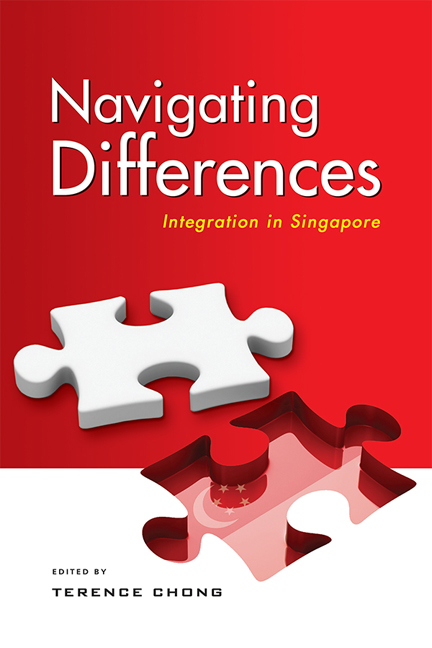1 - Introduction
Published online by Cambridge University Press: 24 November 2020
Summary
Integration in Singapore is becoming increasingly important. While this may sound like a truism today, it certainly was not the case when Singapore was thrust into modernity under the auspices of the East India Company in 1819. Established as a trading port, and later as part of the Straits Settlements Crown Colony in 1867, the island began to see a steady stream of immigrants from South China and South India arrive onto its shores. As indentured labourers, small traders, and farmers escaping droughts, these Chinese and Indian immigrants added another socio-economic layer to the existing network of activities of the Orang Laut, Javanese, and Bugis that had long connected the island to the rest of the Malay World prior to Stamford Raffles’ arrival. Integration was not a priority for the colonial administration. Preferring clear and distinct communal divisions, these ethnic communities were, over time, allotted different living quarters near the mouth of the river. Intermediaries from these ethnic communities were appointed to represent collective interests and concerns to the colonial government. Key institutions such as clan associations, guild houses, kongsis and temples for the Chinese community, and Hindu associations, merchant groups, and temples for the Indian community served as constellations for their respective cultural universes (Trocki 1990; Rai 2014) from which these communities formed their collective identities. Naturally there was everyday intermingling between the ethnic communities in shared public spaces while economic and business relationships were forged across ethnic divides in the marketplace. However, because there was no overarching common identity and because of the desire for many of these Chinese sojourners to return to their homeland, the idea of social integration in which different social groups incorporate themselves into the existing social structure to function cohesively so as to achieve the collectively desired outcomes was just not in the air.
Integration ceased to be an abstract concept upon separation from Malaysia in 1965. The island's multicultural character made it necessary for Singapore's first-generation leaders to find an equilibrium between two ideological positions. On one hand is the belief that the “nation” is only meaningful because it is made up of local communities.
- Type
- Chapter
- Information
- Navigating DifferencesIntegration in Singapore, pp. 1 - 16Publisher: ISEAS–Yusof Ishak InstitutePrint publication year: 2020

